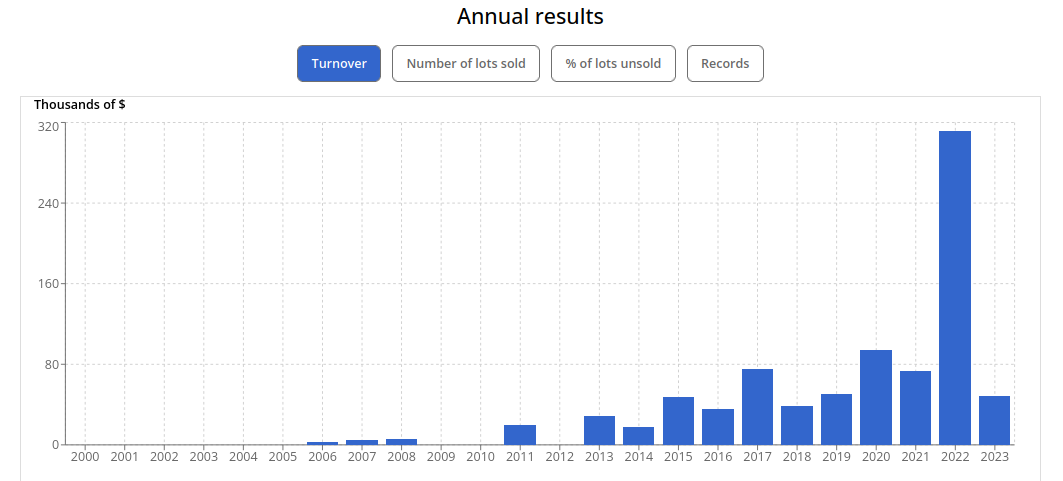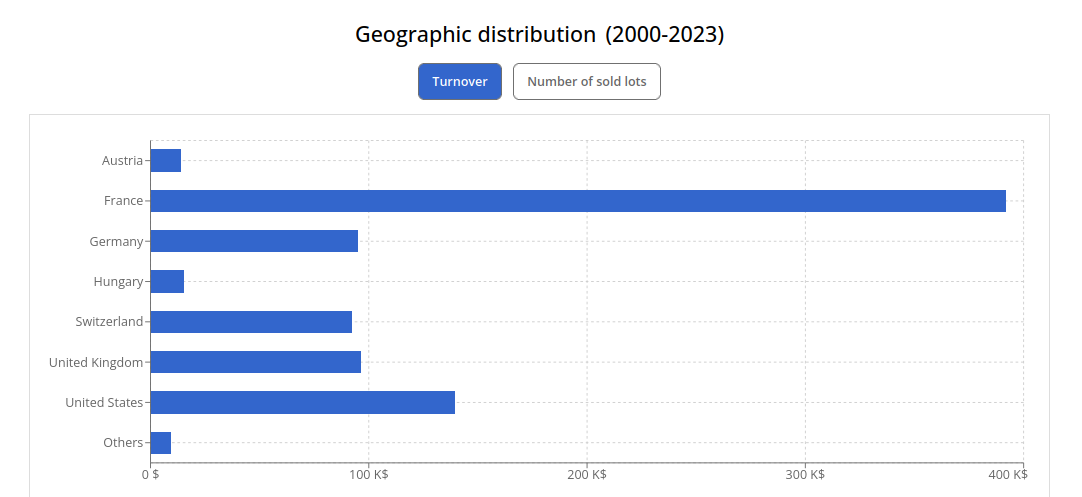Vera Molnár, hommage to a pioneer
[12 Dec 2023]Vera Molnár used computers to create art for over fifty years. She died on December 7 last, just a few weeks before the opening of an exhibition to celebrate her 100th birthday at the National Museum of Modern Art in Paris.
Vera Molnár was the first woman to use algorithms to produce her works and she did this by working like a computer ever before actually having access to one. In 1959, in fact, she developed her “imaginary machine” method, i.e. logical procedures separating the modalities of design and production to produce compositions. Already, her approach broadened the ways a drawing can be generated by relying on mathematical devices and simple programs. About ten years later, she approached the computer center at the University of Paris and managed to use a computer among researchers who were programming on punch cards at the time.
A new vision of art…
As the technology advanced, Véra MOLNAR increasingly freed herself from the tedious mental calculations necessary for the design of her works by delegating to the machine the investigation and proposal of a rich corpus of images to choose from. In 1974, assisted by her mathematician husband, François Molnár, she developed a creation assistance program called MolnArt (program linked to a display screen and a plotter). The process was as follows: Vera dictated her wishes to the computer, waited for the machine to provide her with a multitude of possibilities, adjusted the parameters to reduce redundancy, and then, modified until she obtained a satisfactory aesthetic result that she subsequently transposed onto a canvas. The images therefore came from the proposals of a machine configured by an artist who used the digital material with intuitive adjustments, introducing a hint of disorder and irregularity. The artist’s subjectivity was therefore at work and, in fine, it was always Vera who decided the aesthetic validity of the proposals, selecting this or that image among the infinite variations proposed.
It would be tempting to reduce Vera Molnár’s work to its digital processes, but for Molnár, the line (i.e. the line traced by the hand of the artist) is a living, dynamic being, existing in space and time. Its emergence is not reduced to the visual transcription of mathematical data: it also conveys human sensitivity; its shape, its orientation, its undulation, its rhythm and its interruptions are narrative features and, as such, convey experience.

Vera Molnár’s market
Fifty years ago, the art world was not ready to receive works that integrated machines into their creative processes. Those of Vera Molnár were more likely to scandalize the public than to interest them… At the time, the artist was also accused by certain members of her entourage of dehumanizing art. Incomprehension of her tenacious desire to marry art with innovation did little to help her commercial career as an artist. Galleries could not viably propose an oeuvre that was so ahead of its time. Don’t forget that digital art, as we know it, has only been present on the art market for three years. However, back in the 1990s, after more than 40 years of creation, Vera Molnár’s works began to sell, and in 2022 her work fits perfectly into the dematerialization that has become a key element of our times.
The creation of her first NFT in 2022 also allowed the Molnar to renew her personal auction record with a work titled 2% of disorder in co-operation #01 that fetched $138,600 during the sale Natively Digital 1.3: Generative Art organized by Sotheby’s in April 2022. Her record for a physical work was established three months later at Phillips in London, with $120,700 paid for a set of digital prints from 1974 (nine drawings depicting squares, under the title (Des)ordres).
In 2023, Sotheby’s launched its first generative art platform with 500 generative works from the latest Molnár NFT series, Themes and variations (2023). This set of works, produced in collaboration with Martin Grasser, constitutes Vera Molnár’s first on-chain generative art project, implying that the 500 NFTs that make up the series do not exist until they are purchased. Although the artist has generated test copies to preview the series, each NFT is only minted when it is sold. The auction opened in July 2023 with a starting price of 20 ETH, which is the maximum price at which each NFT can be purchased. The price then dropped in increments of 0.1 ETH every 15 seconds, until the works were sold out or the price reached 0.75 ETH.

Always in tune with innovative technologies, even as she approached 100, her work still changes hands at very modest prices, particularly compared to the amounts paid for works by the new generation of digital artists. Her record of $138,600 is only a fraction of the price paid for Dmitri CHERNIAK’s NFT Ringers #879 which fetched $6.2 million last summer at Sotheby’s. But the perpetual reassessment and reinterpretation of Molnar’s work – particularly that offered this year at the Pompidou Center in Paris – should give a well-deserved boost to the popularity of this pioneer.
True, the NFT market has shrunk considerably since the powerful speculative wave that shook the art market in 2021, but the market for digital art has not gone away and is very likely to grow again from a more solid base. Meanwhile, its emergence has drawn attention to the historical precedents of digital art with a focus on artists who may be described as its pioneers, among whom Vera Molnár was clearly one of its key initiators.
Several NFT collectors and some major auction houses have indeed shown an interest in returning to the origins of algorithmic art and establishing an ‘art history’ of the medium by examining its sources. Vera Molnár very clearly belongs to this history from its very beginnings.
Exhibition Vera Molnár, 100 ans
George Pompidou Center, Paris
February 28 – September 2, 2024




 0
0
